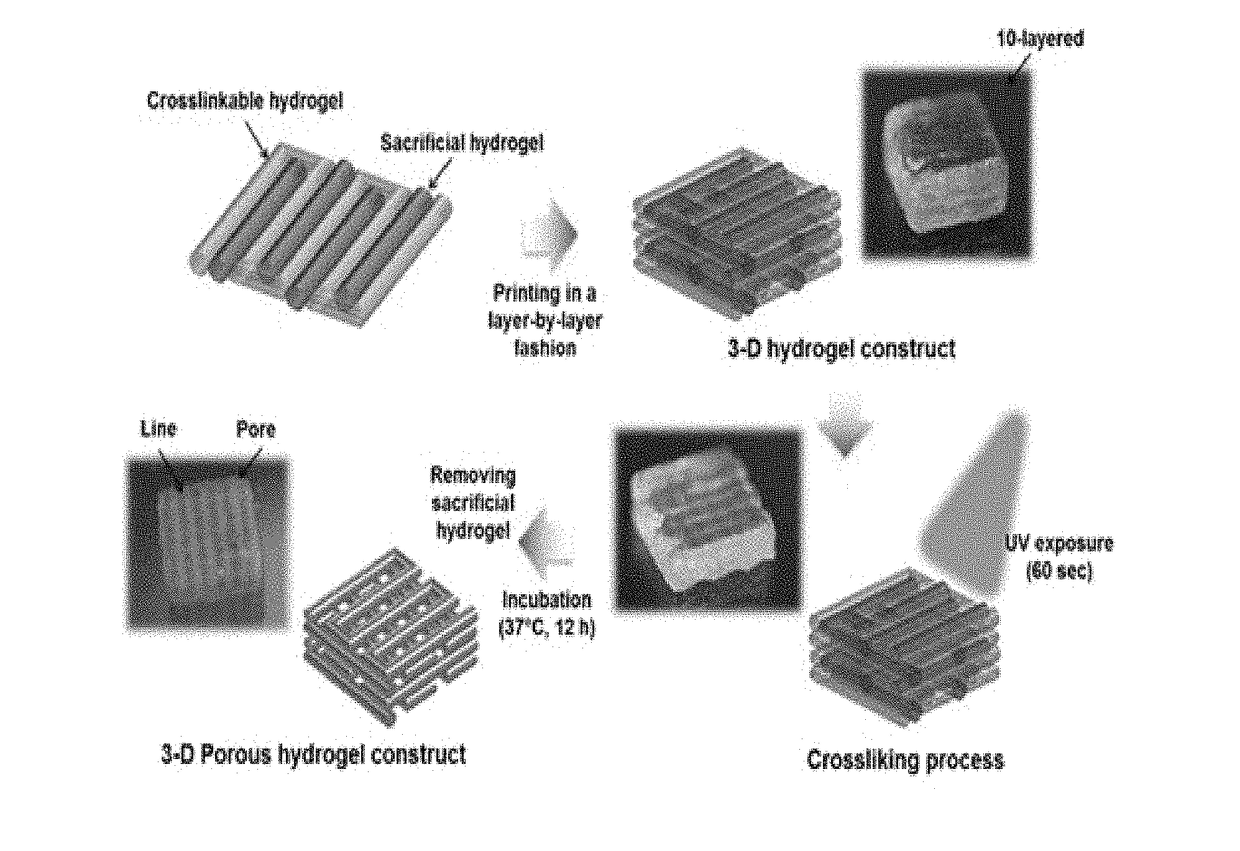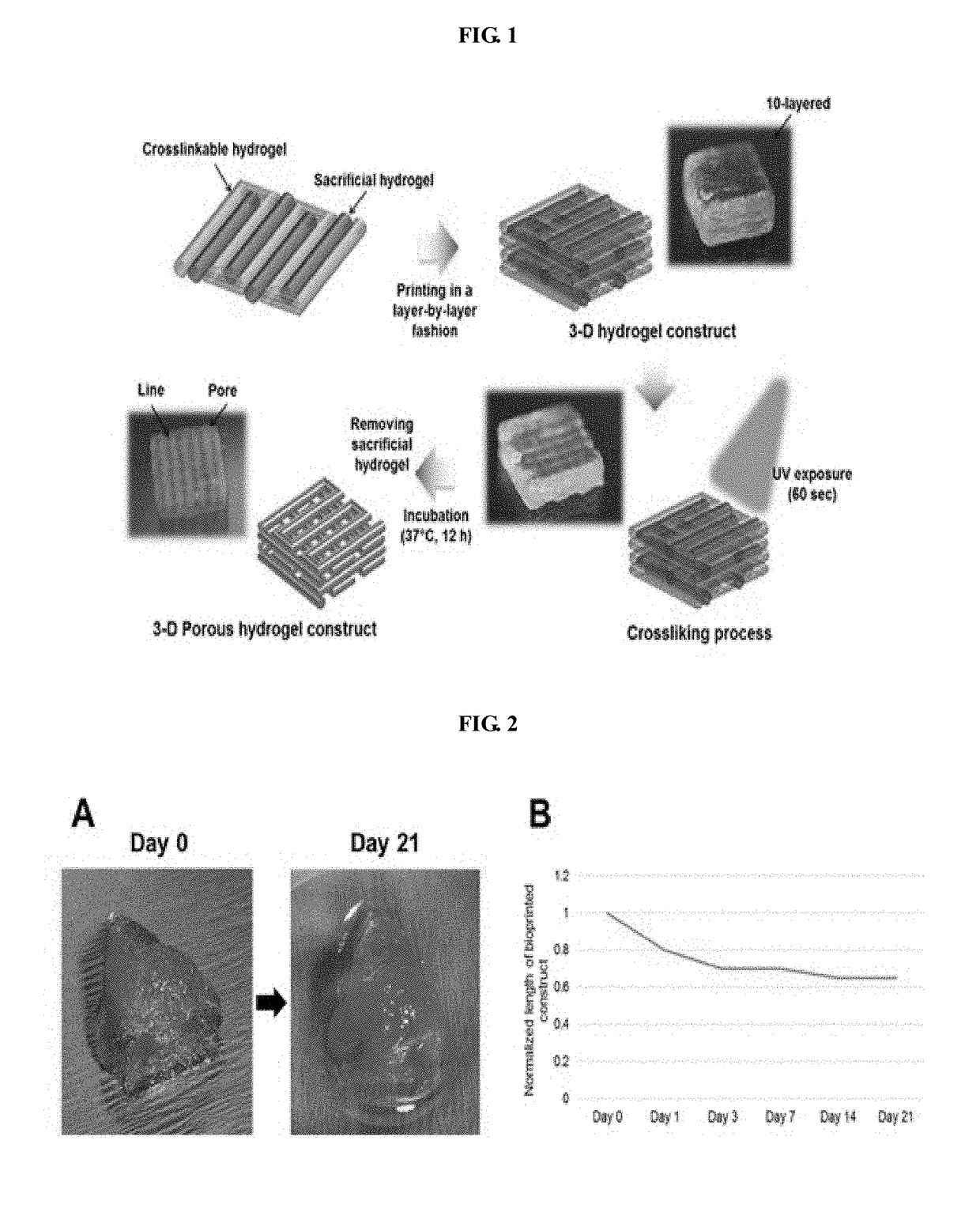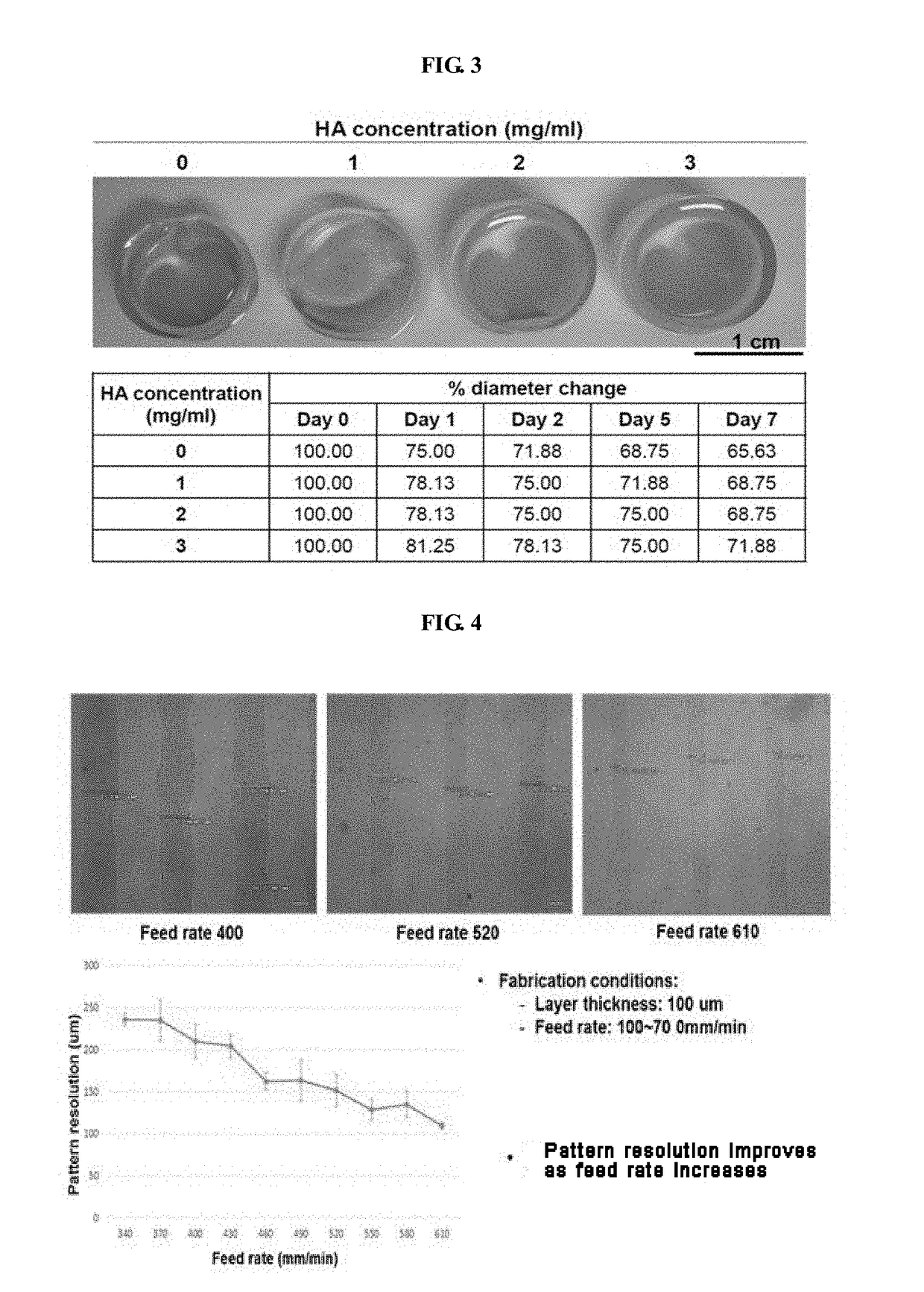Bio-ink composition having improved physical and biological properties
a bio-ink and composition technology, applied in the field of bio-ink compositions with improved physical and biological properties, can solve the problems of reducing direct experimental applications to human specimens and other mammals, reducing the use of bio-inks, and a biomaterial that carries living cells during bio-printing, and achieving the effects of high viscosity, rapid formation of crosslinking, and strong shear-thinning tendency
- Summary
- Abstract
- Description
- Claims
- Application Information
AI Technical Summary
Benefits of technology
Problems solved by technology
Method used
Image
Examples
example 1
ure
[0075]In order to evaluate the bio-ink composition of the present invention, various cells were utilized as follows: 3T3 fibroblast cell line (ATCC, Manassas Va., USA) was cultured in high glucose DMEM culture medium (Life Technologies) containing 10% fetal bovine serum (FBS, Life Technologies, Carsbad, Calif., USA) and 1% penicillin / streptomycin at 37° C. in a 5% C02 cell incubator.
[0076]Chondrocytes separated from the cartilage of a rabbit by enzymes were cultured in DMEM / F-12 culture medium (Life Techologies) containing 10% FBS and 1% penicillin / streptomycin at 37° C. in a 5% C02 cell incubator.
[0077]The C2Cl2 muscle cell line (ATCC) was cultured in high glucose DMEM culture medium containing 10% FBS and 1% penicillin / streptomycin, and then cultured in DMEM / F-12 medium and 1% horse serum (HS, Life Technologies) for muscle fiberization.
example 2
on of Bio-Ink Composition
[0078]The bio-ink composition of the present invention comprises a temperature-sensitive gelatin (35 mg / mL, Sigma-Aldrich, St. Louis, Mo., USA) which has a sufficient viscosity so that printing can be performed in a uniformly mixed form of cells, hyaluronic acid (3 mg / mL, Sigma-Aldrich) which can enhance the viscosity of the bio-ink during printing and improve the uniformity of the pattern, glycerol (10 v / v %, Sigma-Aldrich) as a lubricant which reduces nozzle clogging, and a chemically modified gelatin (20 mg / mL methacrylated gelatin) which provides structural stability by cross-linking after printing. The bio-ink composition in which such components were fully mixed and dissolved was sterilized using a 0.45 um injector-type filter.
example 3
n of Dispensing Rate and Structural Stability of Bio-Ink Composition
[0079]The uniformity of the pattern and the stability of the printed structure were evaluated upon printing with the bio-ink of the present invention. These are indices indicating the superiority of the bio-ink of the present invention. For evaluation, the bio-ink of the present invention was filled into a bio-printer and printed through a nozzle having a diameter of 300 um at a pressure of 50-80 kPa. The bio-printer used in this experiment is composed of a three-axis moving stage, a dispensing module capable of pneumatic injection, and an injector-type reservoir and a nozzle for charging bio-ink.
[0080]In order to evaluate the change of dispensing rate according to the concentration of gelatin or hyaluronic acid, the content of the remaining components except gelatin or hyaluronic acid was kept the same as that of Example 2. By varying the content of gelatin or hyaluronic acid, the volume of the printed bio-ink was ...
PUM
| Property | Measurement | Unit |
|---|---|---|
| Fraction | aaaaa | aaaaa |
| Fraction | aaaaa | aaaaa |
| Fraction | aaaaa | aaaaa |
Abstract
Description
Claims
Application Information
 Login to View More
Login to View More - R&D
- Intellectual Property
- Life Sciences
- Materials
- Tech Scout
- Unparalleled Data Quality
- Higher Quality Content
- 60% Fewer Hallucinations
Browse by: Latest US Patents, China's latest patents, Technical Efficacy Thesaurus, Application Domain, Technology Topic, Popular Technical Reports.
© 2025 PatSnap. All rights reserved.Legal|Privacy policy|Modern Slavery Act Transparency Statement|Sitemap|About US| Contact US: help@patsnap.com



